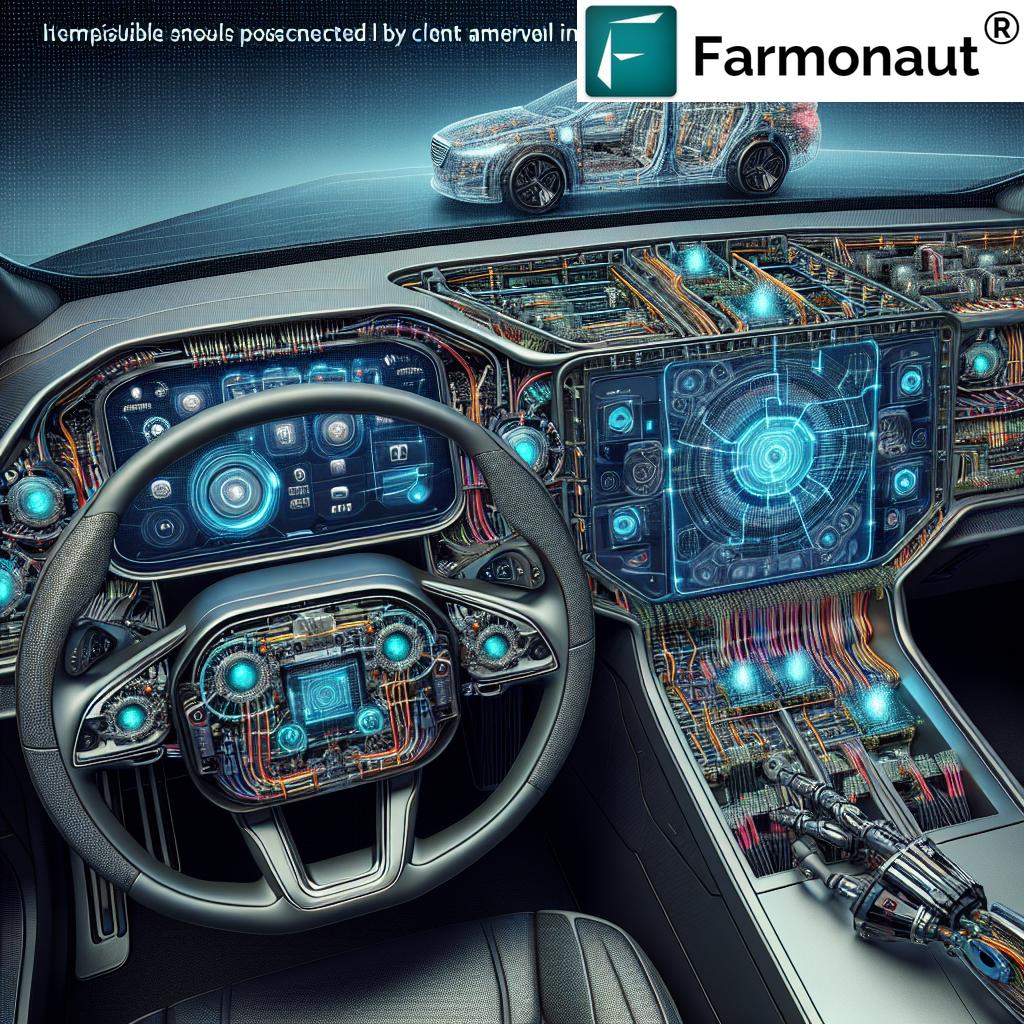Revolutionizing Automotive Wiring: How EVs and ADAS Are Driving Market Growth to $125.3 Billion by 2035
“The automotive wiring harness market is projected to nearly double from $67.4 billion in 2025 to $125.3 billion by 2035.”
In the rapidly evolving landscape of automotive technology, the wiring harness industry stands at the forefront of innovation, poised for remarkable growth in the coming decade. As we delve into this comprehensive analysis, we’ll explore how electric vehicles (EVs) and Advanced Driver Assistance Systems (ADAS) are revolutionizing automotive wiring, propelling the market towards an unprecedented valuation of $125.3 billion by 2035.
The Automotive Wiring Harness Market: A Snapshot
The global automotive wiring harness market is on an impressive trajectory, with projections indicating a surge from $67.4 billion in 2025 to a staggering $125.3 billion by 2035. This remarkable growth, characterized by a Compound Annual Growth Rate (CAGR) of 6.4%, is primarily driven by the increasing adoption of electric vehicles and the integration of advanced electronic systems in modern automobiles.

Key Factors Driving Market Expansion
- Vehicle Electrification: The shift towards electric and hybrid vehicles is creating demand for high-voltage wiring harnesses.
- ADAS Integration: Advanced driver assistance systems require complex wiring solutions for sensors and data transmission.
- Safety and Emission Regulations: Stricter norms are pushing manufacturers to develop reliable, high-performance wiring solutions.
- Lightweight Vehicle Architecture: The trend towards reducing vehicle weight is driving innovation in lightweight wiring materials.
The Impact of Electric Vehicles on Wiring Harness Demand
The rise of electric vehicles is fundamentally changing the automotive wiring landscape. Unlike traditional internal combustion engine (ICE) vehicles, EVs require more sophisticated and high-voltage wiring systems to efficiently manage power distribution, battery connectivity, and electronic components.
Key Aspects of EV Wiring Harnesses:
- High-Voltage Systems: EVs typically operate at voltages of 400V or higher, necessitating specialized wiring harnesses.
- Thermal Management: Enhanced cooling systems for batteries and power electronics require additional wiring complexity.
- Weight Reduction: Lightweight materials like aluminum and optical fibers are gaining traction to optimize battery efficiency and driving range.
- EMI Shielding: Increased focus on electromagnetic interference (EMI) protection for sensitive electronic components.
“With a CAGR of 6.4%, the automotive wiring harness market growth is driven by electric vehicles and advanced driver assistance systems.”
ADAS Integration: Driving Complexity in Automotive Wiring
Advanced Driver Assistance Systems (ADAS) are revolutionizing vehicle safety and autonomy, but they also significantly increase the complexity of automotive wiring harnesses. The integration of multiple sensors, cameras, radar, and LiDAR systems requires extensive wiring to transmit data efficiently.
ADAS Features Impacting Wiring Harness Design:
- Adaptive Cruise Control
- Lane Departure Warning
- Blind Spot Monitoring
- Autonomous Emergency Braking
These systems demand high-speed data transmission and reliable power distribution, leading to the development of advanced wiring architectures such as zonal and flexible harness designs.

Market Segmentation and Key Players
The automotive wiring harness market is segmented based on various factors:
By Product Type:
- Chassis & Safety Harnesses
- Body Harnesses
- Engine Harnesses
- HVAC Harnesses
- Sensor Harnesses
By Vehicle Type:
- Passenger Cars
- Light Commercial Vehicles
- Heavy Commercial Vehicles
- Electric Vehicles (BEV, PHEV)
Leading Market Players:
- Delphi Technologies (BorgWarner Inc.)
- Aptiv PLC
- Yazaki Corporation
- Sumitomo Electric Industries, Ltd.
- Leoni AG
These key players are investing heavily in research and development to create innovative wiring solutions that meet the evolving needs of the automotive industry.
Regional Analysis: Global Market Dynamics
The automotive wiring harness market exhibits distinct regional trends:
North America:
- Strong demand driven by high adoption of ADAS and EVs
- Stringent safety regulations fostering innovation
- Presence of leading automakers and technology providers
Europe:
- Strict emission norms accelerating demand for high-performance wiring
- Leading role in EV development, especially in Germany, France, and the UK
- Focus on smart connectivity and infotainment systems
Asia-Pacific:
- Largest automotive production hub, led by China, Japan, and South Korea
- Government incentives for EVs driving market growth
- Rapid urbanization and increasing vehicle demand
Technological Advancements Shaping the Future
The automotive wiring harness industry is witnessing several technological advancements:
- Fiber Optic Wiring: Increasing use of fiber optics for high-speed data transmission
- Smart Junction Boxes: Integration of intelligent power distribution units
- Wireless Harness Systems: Exploration of wireless technologies to reduce wiring complexity
- 3D Printing: Potential for customized, rapid prototyping of wiring harnesses
Market Challenges and Opportunities
While the market shows promising growth, it also faces several challenges:
Challenges:
- Increasing complexity of vehicle electronics
- Raw material price fluctuations
- Balancing cost and performance in lightweight designs
Opportunities:
- Growing demand for electric and autonomous vehicles
- Advancements in lightweight and high-performance materials
- Increasing focus on vehicle-to-everything (V2X) communication
The Role of Sustainability in Wiring Harness Design
Sustainability is becoming increasingly important in the automotive industry, and wiring harness manufacturers are responding to this trend:
- Recyclable Materials: Development of eco-friendly wiring materials
- Energy Efficiency: Designing harnesses to minimize power loss
- Lifecycle Assessment: Considering environmental impact from production to disposal
Future Outlook: Beyond 2035
As we look beyond 2035, the automotive wiring harness market is poised for continued innovation:
- AI Integration: Potential for self-diagnosing and self-repairing wiring systems
- Autonomous Vehicle Revolution: Increased demand for ultra-reliable wiring solutions
- Smart Cities and Infrastructure: Integration with urban mobility systems
Market Growth Comparison Table
| Market Aspect | 2025 Estimate | 2035 Projection | Growth Factor |
|---|---|---|---|
| Market Size ($ Billion) | 67.4 | 125.3 | 1.86x |
| EV Market Share (%) | 15% | 40% | 2.67x |
| ADAS Integration Rate (%) | 30% | 75% | 2.5x |
| Average Wiring Length per Vehicle (meters) | 1500 | 2500 | 1.67x |
| Lightweight Materials Adoption (%) | 20% | 60% | 3x |
Conclusion: A Wired Future
The automotive wiring harness market is at the cusp of a transformative era, driven by the electric vehicle revolution and the integration of advanced driver assistance systems. As we progress towards 2035, we can expect to see continued innovation in materials, design, and functionality of wiring harnesses. The industry’s ability to adapt to these changes while addressing challenges like weight reduction and cost efficiency will be crucial in shaping the future of automotive technology.
For stakeholders in the automotive and technology sectors, staying abreast of these developments will be essential. The wiring harness market represents not just a component of vehicle manufacturing, but a critical enabler of the automotive industry’s broader shift towards electrification, autonomy, and connectivity.
FAQs
- Q: How is the adoption of electric vehicles impacting the automotive wiring harness market?
A: The rise of EVs is driving demand for high-voltage wiring systems and lightweight materials, significantly increasing the complexity and value of wiring harnesses. - Q: What role does ADAS play in the growth of the wiring harness market?
A: ADAS integration requires extensive wiring for sensors and data transmission, increasing the overall wiring content in vehicles and driving market growth. - Q: How are manufacturers addressing the challenge of vehicle weight reduction?
A: Manufacturers are developing lightweight materials like aluminum and optical fibers, and optimizing harness designs to reduce overall vehicle weight. - Q: What are the key technological advancements in automotive wiring harnesses?
A: Key advancements include fiber optic wiring, smart junction boxes, wireless harness systems, and the potential use of 3D printing for customization. - Q: How is sustainability being addressed in the wiring harness industry?
A: The industry is focusing on recyclable materials, energy-efficient designs, and lifecycle assessments to improve the environmental impact of wiring harnesses.
Earn With Farmonaut: Join our affiliate program and earn 20% recurring commission by helping farmers save 10% with your promo code. Onboard 10 Elite farmers monthly to earn a minimum of $148,000 annually—start now and grow your income!
For more information on our agricultural technology solutions, visit our API page or check out our API Developer Docs.
Download our apps:
Or use our web app:
















